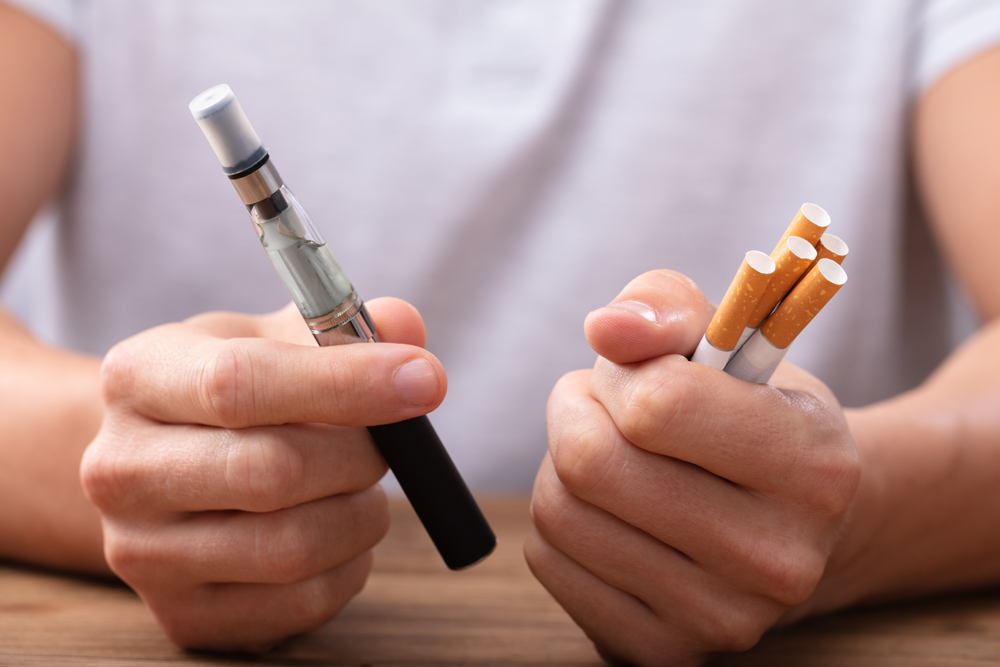Last month I got a frantic phone call from a parent who had just found out that her daughter, who is in high school, is vaping. There was anguish, shock, disbelief and helplessness in the mom’s voice. Vaping is the term used for inhaling the vapor from an e-cigarette. The vapor contains nicotine and other harmful substances. Nearly 40% of kids have vaped at least once. Vaping is easy to hide, so it’s crucial to know the signs.
- Vape pens can look like USB flash drives.
- Vaping doesn’t smell like tobacco. You may detect a sweet scent.
- Kids who vape often cut back on caffeine, have an increased thirst, or get nosebleeds.
Vaping is a growing epidemic among teenagers since the inception of the device in the early 2000s. National tobacco youth survey results for 2018 showed more than 3.6 million youth are using e-cigarettes, 4.9% of middle schoolers (an increase of 48%) and 20.8% of high schoolers (an increase of 78%).
E-cigarettes are known by a variety of names, including vape pens, e-hookahs, mods, tank systems, and e-cigs. They are electronic devices that use a battery to aerosolize a liquid, usually containing nicotine, flavoring, and other additives, which is inhaled by the user through a mouthpiece. The most widely used brand is JUUL.
Many young people believe that e-cigarettes deliver “harmless water vapor” and may not realize the product can contain nicotine. Besides nicotine e-cigarettes can contain potentially harmful ingredients, including ultrafine particles that can be inhaled deep into the lungs, flavorants such as diacetyl, a chemical linked to chronic lung disease, volatile organic compounds and heavy metals, including nickel, tin, chromium, and lead. Acrolein, a known ingredient of many e-cigarettes, causes irreversible lung damage.
Nicotine can have negative effects on the adolescent brain. The brain is the last organ in the human body to develop fully. Brain development continues to about the early to mid-20s. Young people who use e-cigarettes can develop learning, attention and cognitive deficits. They can also develop mood disorders and permanent lowering of impulse control.
The nicotine in e-cigarettes and other tobacco products can also affect the development of the brain’s reward system, priming the adolescent brain for addiction to other drugs such as cocaine and methamphetamine.
Until recently, e-cigarettes have not been regulated at the federal level, and there have not been requirements for ingredient testing or disclosure. The most popular brand of e-cigarette among teens is JUUL whose manufacturer claims that each pod may contain as much nicotine as a pack of cigarette.
In an important victory for public health, a federal judge in May 2019 set a 10-month deadline of May 12, 2020, for e-cigarette manufacturers to apply to the FDA and submit their products for public health review if they want to keep them on the market. Products that do not submit applications by the deadline are subject to FDA enforcement to remove them from the market.
Many schools are beginning to implement policies aimed at reducing vaping in school, such as imposing consequences like suspension or even expulsion and using monitors in the bathrooms. But these measures may not be enough, especially if your teenager is becoming a frequent user. If you suspect your teen is vaping, below are some recommendations for what you can do:
- Get credible information about e-cigarettes and be patient and ready to listen to your teen.
- Let your child know that you want them to stay away from all tobacco products, including e-cigarettes, because they are not safe for them.
- Set up an appointment with your child’s health care provider so that they can hear from a medical professional about the health risks of tobacco products, including e-cigarettes.Set an example with a tobacco free environment.
For more tips on this subject, I encourage you visit the following resources:
- ecigetettes.surgeongeneral.gov. -parent tip sheet.
- Lung.org/stop-smoking/vapetalk
- 1800-LUNG-USA or lung.org/helpline.



